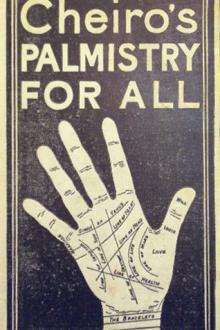The Diary - Samuel Pepys (red white and royal blue hardcover txt) 📗

- Author: Samuel Pepys
Book online «The Diary - Samuel Pepys (red white and royal blue hardcover txt) 📗». Author Samuel Pepys
John Bide, brewer, Sheriff of London in 1647. —B. ↩
The church of St. Catherine Cree, having escaped the Fire, was resorted to by the Corporation after the destruction of St. Paul’s and so many other ecclesiastical edifices; and Pepys probably expected to see alterations made for their accommodation. —B. ↩
Betty Turner, who is frequently mentioned after this date, appears to have been a daughter of Serjeant John Turner and his wife Jane, and younger sister of Theophila Turner (see January 4th, 6th, 1668–69). ↩
John Thompson was vicar of St. Dunstan’s-in-the-West from 1662 to 1677, in which year he died. ↩
Sir William Coventry’s proposal for reducing the charge of the navy was adopted by the king in council on March 16th, 1668–69. The order and the proposal are printed from the “Warrant Books” in Penn’s Memorials of Sir William Penn, vol. ii, p. 527. ↩
Whittlebury Forest, Northamptonshire. ↩
This could scarcely be the famous John Blow, as he would then have been nineteen years of age. ↩
Shooting the men was rather more than “a show of severity.” —B. ↩
The post of Master Falconer was afterwards granted to Charles’s son by Nell Gwyn, and it is still held by the Duke of St. Albans, as an hereditary office. —B. ↩
Nell Gwyn agreed with Pepys that serious parts were unsuited to her. In an Epilogue to the tragedy of the Duke of Lerma, spoken by her, occur these lines:
“I know you, in your hearts,
Hate serious plays—as I hate serious parts.”
and in the Epilogue to Tyrannical Love:
“I die
Out of my calling in a tragedy.”
↩
Orange Moll, of the King’s Playhouse. ↩
So much of London was yet in ruins. —B. ↩
The “boot” was originally a projection on each side of the coach, where the passengers sat with their backs to the carriage. Such a “boot” is seen in the carriage containing the attendants of Queen Elizabeth, in Hoefnagel’s well-known picture of Nonsuch Palace, dated 1582. Taylor, the Water Poet, the inveterate opponent of the introduction of coaches, thus satirizes the one in which he was forced to take his place as a passenger: “It wears two boots and no spurs, sometimes having two pairs of legs in one boot; and oftentimes against nature most preposterously it makes fair ladies wear the boot. Moreover, it makes people imitate sea-crabs, in being drawn sideways, as they are when they sit in the boot of the coach.” In course of time these projections were abolished, and the coach then consisted of three parts, viz., the body, the boot (on the top of which the coachman sat), and the baskets at the back. ↩
See note 3650 on introduction of glass coaches. ↩
See August 9th. ↩
In the parish of Fulham, Middlesex. ↩
His waterman. ↩
See April 8th, 1667. ↩
Charles Hart, great-nephew of Shakespeare, a favourite actor. He is credited with being Nell Gwyn’s first lover (or Charles I, as the wits put it), and with having brought her on the stage. He died of stone, and was buried at Stanmore Magna, Middlesex, where he had a country house. ↩
Lord Buckhurst’s liaison with Nell Gwyn probably came to an end about this time. We learn from Pepys that in January, 1667–68, the king sent several times for Nelly (see January 11th, 1667–68). Nell’s eldest son by Charles II, Charles Beauclerc, was not born till May 8th, 1670. He was created Earl of Burford in 1676 and Duke of St. Albans in 1684. ↩
William Chiffinch (see note 2814 and note 3072). ↩
Deputy-Governor of Tangier. ↩
See note 2414. ↩
Clarendon refers to this scene in the continuation of his Life (ed. 1827, vol. iii, p. 291), and Lister writes:
“Lady Castlemaine rose hastily from her noontide bed, and came out into her aviary, anxious to read in the saddened air of her distinguished enemy some presage of his fall.”
Life of Clarendon, vol. ii, p. 412↩
William Barker, who married Martha, daughter of William Turner, and widow of Daniel Williams. His son William was created a baronet in 1676. —B. ↩
Colonel Robert Werden afterwards held office under James II and Queen Mary, and obtained the rank of major-general. His eldest son, John, was created a baronet in 1672. See note 3485. ↩
The well-known story, first told by Boccaccio, then by Petrarca, afterwards by Chaucer, and which has since become proverbial. Tom Warton, writing about 1770, says, “I need not mention that it is to this day represented in England, on a stage of the lowest species, and of the highest antiquity: I mean at a puppet show” (Hist. of English Poetry, sect. xv). —B. ↩
Sir Orlando Bridgman (1608–1674) was appointed Lord Keeper on August 30th, but no successor was appointed to take his place at the Common Pleas till May, 1668, when Sir John Vaughan became Chief Justice. During the interval Bridgman filled both offices. ↩
Sir Geofifrey Palmer continued to hold the office of Attorney-General until 1670. ↩
Sir Heneage Finch also continued as Solicitor-General till 1670, when he was succeeded by Sir Edward Turner. ↩
In





Comments (0)